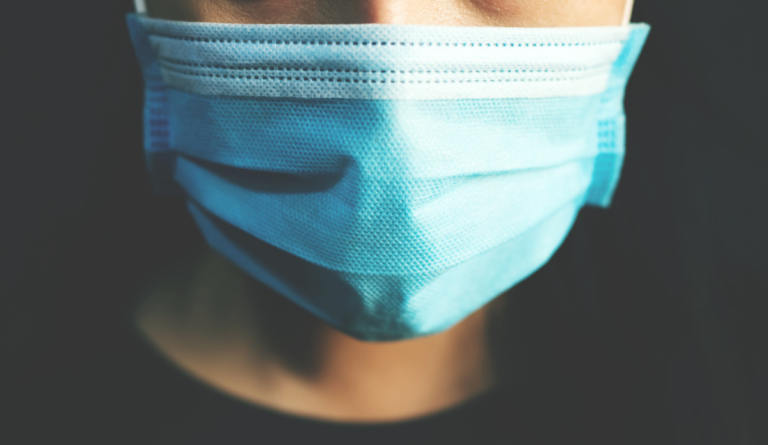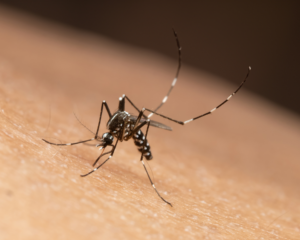Learning from Past Disasters to Help COVID Long Haulers
One in 7 Americans are still reporting symptoms of long COVID. Our current safety net is insufficient to support them.

Read Time: 5 minutes
Published:
The Biden Administration has ended funding for the few remaining supports combatting COVID, including free vaccines, treatments, and tests. Congress terminated the Medicaid continuous coverage provision in March, which previously incentivized states to insure low-income patients without interruption. Since the provision was ended, over 5 million people have lost insurance, primarily for procedural reasons, like not completing renewal paperwork on time. According to President Biden, “we have broken COVID’s grip on us,” and thus no longer need a generous safety net. But what happens to the 1 in 7 American adults who still report long COVID symptoms?
Frankly, we still have little understanding of what long COVID is, let alone how to treat it. The Biden Administration launched two research initiatives, NIH’s RECOVER and CDC’s INSPIRE, to better understand the condition and begin clinical trials for treatments. But it could take years for research to yield meaningful relief for the millions currently struggling with debilitating symptoms, including headaches, cognitive impairments, anxiety disorders, shortness of breath, fatigue, chronic pain, heart palpitations, and more. These symptoms not only contribute to a worse quality of life than stage 4 lung cancer, but studies have also found that 3% of patients with long COVID die within a year of infection, primarily from cardiac arrhythmias, blood clots, strokes, heart failure, and respiratory diseases caused by long COVID. Clinicians warn that these vascular and neurological consequences will “reverberate for generations” to come.
The dismantling of our testing, treatment, and paid sick leave infrastructure reflects an acceptance that most people will eventually get COVID. And while the vaccine is safe and effective at reducing the risk of severe illness, there is no conclusive evidence that the vaccine significantly decreases the risk of long COVID.
Indeed, repeated infection puts people at additional risk. A recent study found that reinfection with COVID (regardless of vaccination status) triples the risk of long COVID symptoms. Using the most conservative estimates of long COVID incidence rates, we can expect tens of millions of new long COVID patients over the next couple of years.
The Biden Administration has taken initial steps to support long COVID sufferers. The Department of Health and Human Services and the Department of Justice have defined long COVID as a disability under the Americans with Disabilities Act, and the Social Security Administration has declared that long COVID potentially qualifies people for disability benefits. However, 80% of the people with long COVID symptoms report being unable to carry out their daily activities, and 67% of patients cannot work the same number of hours that they were previously able to. Unsurprisingly, the CDC has recently stated that “long Covid is contributing to a labor shortage and is hurting the U.S. economy.”
If we are willing to recognize long COVID as a grave public health threat, we can take this opportunity to build new programs that will uplift the health of everyone who survived the pandemic.
Clearly, our current safety net is insufficient to meet the challenge. Only 33% of all disability benefits applicants are ultimately approved, and the average wait time stretches years. The New York State Insurance Fund reported in January that a third of their workers’ compensation claimants have long COVID, an indication of the ease with which long COVID will overwhelm our already dysfunctional disability system. It is delusional to imagine that our preexisting system can care for long COVID patients adequately.
Without new supports, we can expect to see a surge in disability-driven poverty and early death. These impacts will be felt most strongly in communities of color and among low-income families. Women and people of color are disproportionately likely to be essential workers, and studies have shown that essential workers were 55% more likely to get COVID. Congress discussed including retroactive hazard pay for essential workers in several COVID recovery bills but ultimately failed to do so.
Providing for the needs of those living with long COVID is a daunting challenge, but there are precedents for robust policy responses. During the late 1960s and early 70s, Congress enacted a series of laws to provide monthly payments, health screenings, and ventilation safety inspections for mine workers affected by black lung disease. Akin to black lung, long COVID is currently an incurable disease with potentially catastrophic medical costs caused by exposure to an airborne antigen. The Black Lung Benefits Act is a useful model for responding to the long COVID disaster, as is the September 11 Victims Compensation Fund.
The enormity of long COVID also brings new urgency to the need for universal health care. As many long COVID patients are forced to leave the workforce, they will lose their employer-sponsored health insurance, growing the ranks of the uninsured. Following past public health disasters, including Hurricane Katrina and the Flint, Michigan lead contamination crisis, states have deployed Medicaid waivers to care for people exposed to environmental hazards. This model could be another potential (but short-term) response to long COVID.
Long COVID is not going away. We need to go beyond research and relying on our underfunded and weak disability system. If we are willing to recognize long COVID as a grave public health threat, we can take this opportunity to build new programs that will uplift the health of everyone who survived the pandemic. We have examples of bold policy responses after previous disasters – are we willing to learn from them?
Photo via Getty Images




